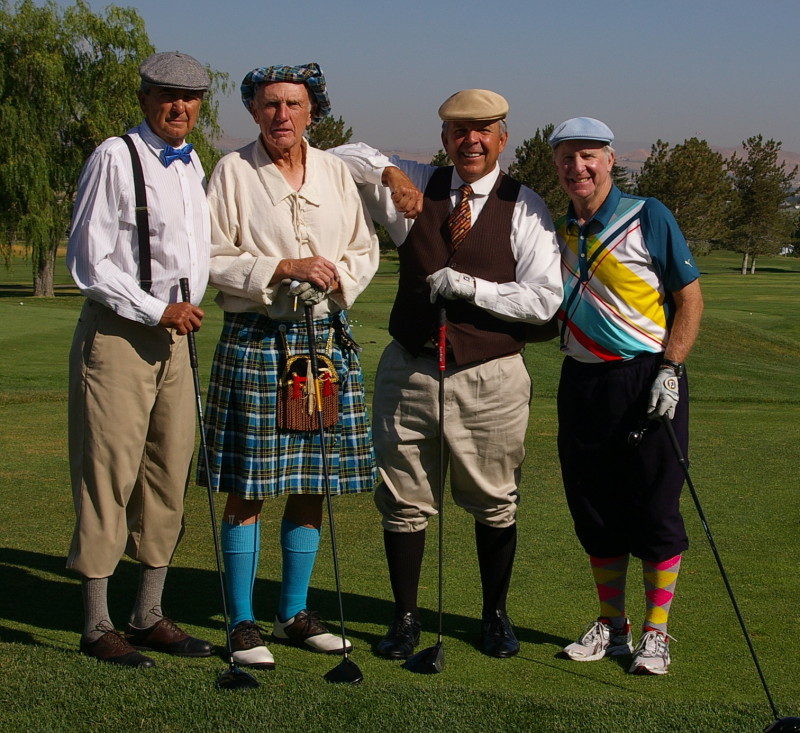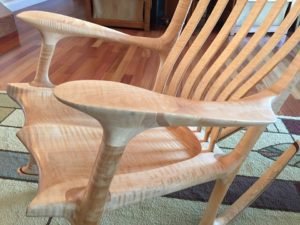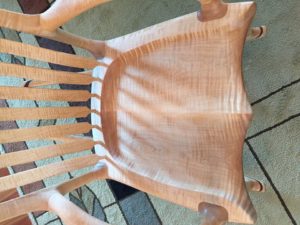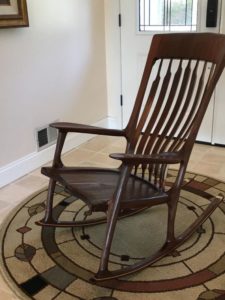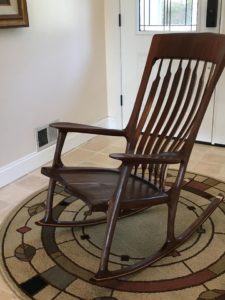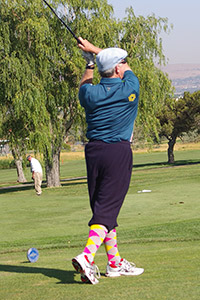 I have several passions in life. Among them are rocking chair making and golf. I am a certified (if not certifiable 🙂 ) custom, heirloom rocking chair maker. I am a decent golfer, a mid-to high single digit golfer who has had a couple of even-par career rounds in my life. Believe it or not, the similarities between golf and chair making are many. To wit.
I have several passions in life. Among them are rocking chair making and golf. I am a certified (if not certifiable 🙂 ) custom, heirloom rocking chair maker. I am a decent golfer, a mid-to high single digit golfer who has had a couple of even-par career rounds in my life. Believe it or not, the similarities between golf and chair making are many. To wit.
Start with PLANNING and VISUALIZATION
In golf, we are taught to stand on the tee and PLAN how to play the hole. Obviously, you plan par three, par four and par five holes differently. On a par three, I generally do not “pin seek” but prefer to hit the ball to the center of the green, unless the flagstick is up front. On a par 4 I will almost always hit driver and I plan to drive the ball on the side of the fairway that will give me the
preferred angle toward the green for my second shot. Because I am a short hitter, I always plan on a par five to hit my second shot to 100 yards (my “go to” distance) from the hole, with the hope that I can “stick” that wedge shot and get an occasional birdie. The point is that on the tee box of any hole, before a shot is taken, I know what my plan is and I visualize that outcome (Execution is a different topic!)
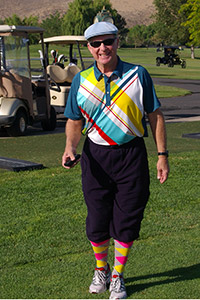 In rocking chair making, the same PLANNING and
In rocking chair making, the same PLANNING and
VISUALIZATION techniques apply. Consider the fact that we know that it will take about 40 board feet to make a chair out of 8/4 lumber. So, we need to closely look at the wood and first observe the sapwood, observe the sides of the wood for indications of interesting grain and observe where there are or are NOT knots in the wood. Then, we need to match interesting grains of wood for the seat, the back legs, the headrest and the arms, as “mirrored” grain is preferred in these parts of the chair. Then, we need to visualize how the “accent” laminations look and we will need to include that consideration in the making process. The point is that, before one grain of wood is cut, I know what my plan is and I visualize that outcome, and, in chair making, the execution is much more predictable!
Big, Large Long……..Voluminous
In both rocking chair makin
g and golf we start with voluminous activity. The drive in golf is the longest hit in golf. For me, my average drive is 230-250 yards. Pros hit the ball well over 300 yards. For me, as a short hitter, ACCURACY is very important. For the pros, accuracy is not as important. Their concern is distance….volume.
In making rocking chairs, the first activity is voluminous as well. We take boards that are 2” thick by 10-12” wide by 8-10 FEET long and out of those boards we make “billets”…..billets for rockers, billets for back braces, billets for arms, billets for the headrest and we band saw out the basic forms of the front legs and the back legs. Finally, we need to cut out the large pieces for the seat…either a two-piece seat or a four-piece seat. Unlike my golf game, accuracy is not vital in the rocking chair making voluminous activity, although it does help in the long run because if you are more accurate in this process there will be less grinding and sanding later.
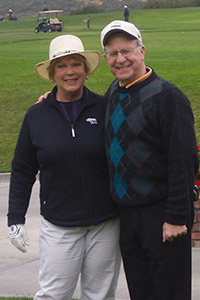 Preparation for “Feel” and Variables
Preparation for “Feel” and Variables
In golf, the approach shot is usually hit with an “iron”. The intent is to hit the green to get ready for putting the ball in the hole. There are many variables that need to be taken into consideration for this shot. (1) Many times the shot choice you are given is a function of the “lie” of the ball…hardpan surface, fairway sitting up, in the rough, etc. Spin is important in golf and the lie on your approach shot will dictate the spin you can put on the ball and will help you hit the green….or not. (2) Wind. Is the wind in your face….directly or at an angle? How hard is the wind? (3) Where are the sandtraps? Most golf architects will design a “bail out” area on a green, usually far from the flagstick…that risk-reward thing. (4) Where is the flagstick? Do I pin-seek or play for the center of the green? (5) What is the speed of the greens? The speed dictate if you NEED to be below the hole at all times. Variables abound……which is what makes golf so interesting to play.
I relate this phase in the rocking chair making process to “assembly”. One of the beautiful things about wood is that it is not perfect. As a result, when we are assembling the components of the rocking chair, there can be many variables.
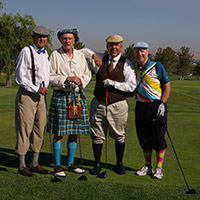
(1) Fit. This is the stage where, among other things, we attach the legs to the seat. Fit is vital. A visual seam is not permissible. Great pain is taken to provide a perfect fit, including planing all surfaces. (2) Repetition of Form. In this stage, we also do a lot of grinding and sanding. The sawdust really flies! The repetition of form is one of the things that makes this rocking chair special, so this step is very important. (3) Headrest and back braces. In this step the back braces and headrest are installed. The headrest gives the chair that unique “wrap around” feel and the back brace shapes make the chair distinctive. Great care must be given here. (4) Chip out. Chip out is a real variable when working with wood, and we must be prepared for that to happen. Keep slivers of wood that match. Keep matching sawdust. Keep your cut-outs handy. We do all of these to repair the inevitable chip-out or mistake. Like golf, the variables in this stage add to the beauty of this perfect, imperfect process of making an heirloom quality rocking chair.
 Feel
Feel
The golf hole ends with a “feel” shot. If you don’t hit the green with your approach shot, you are generally left with a chip shot or a pitch shot. These shots are very delicate shots to coax the ball toward the hole without the ball going too far past the hole. These shots take alot of practice and encompass a lot of “feel”….feeling the club head make contact with the ball. Secondly, there is no shot in golf that is more a “feel” stroke than the putt. Those who play golf know the difficulty in stroking the ball correctly, at the right angle, at the right speed, to drop into that 4 ¼” hole. A missed 3” putt counts the same as a 300 yard drive.
Once the rocking chair is assembled, the “fine tuning” happens. This is where the chair is sanded to a 600 grit and then the wood is polished with abralon, not removing any wood but removing remaining filaments. This process takes hours and IS ALL ABOUT FEEL. During this process we are constantly feeling the wood, searching for high spots, rough spots, low spots, tough spots. Transitions need to be perfect. Synthetic steel wool is used to get to the difficult locations. A rough transition is the same as a missed 3” putt….you work so hard to get there and an error of “feel” leaves less than a perfect chair.
Conclusion
There is a saying in golf: You drive for show and you putt for dough $$”. What this means is that the long, voluminous drive is not as valuable as being a good putter. The same applied to rocking chair making. If you cut the big pieces perfectly, but don’t accomplish the “feel” portion of the chair, your results will not be what you want or expect! Fortunately, I am a really good putter!

